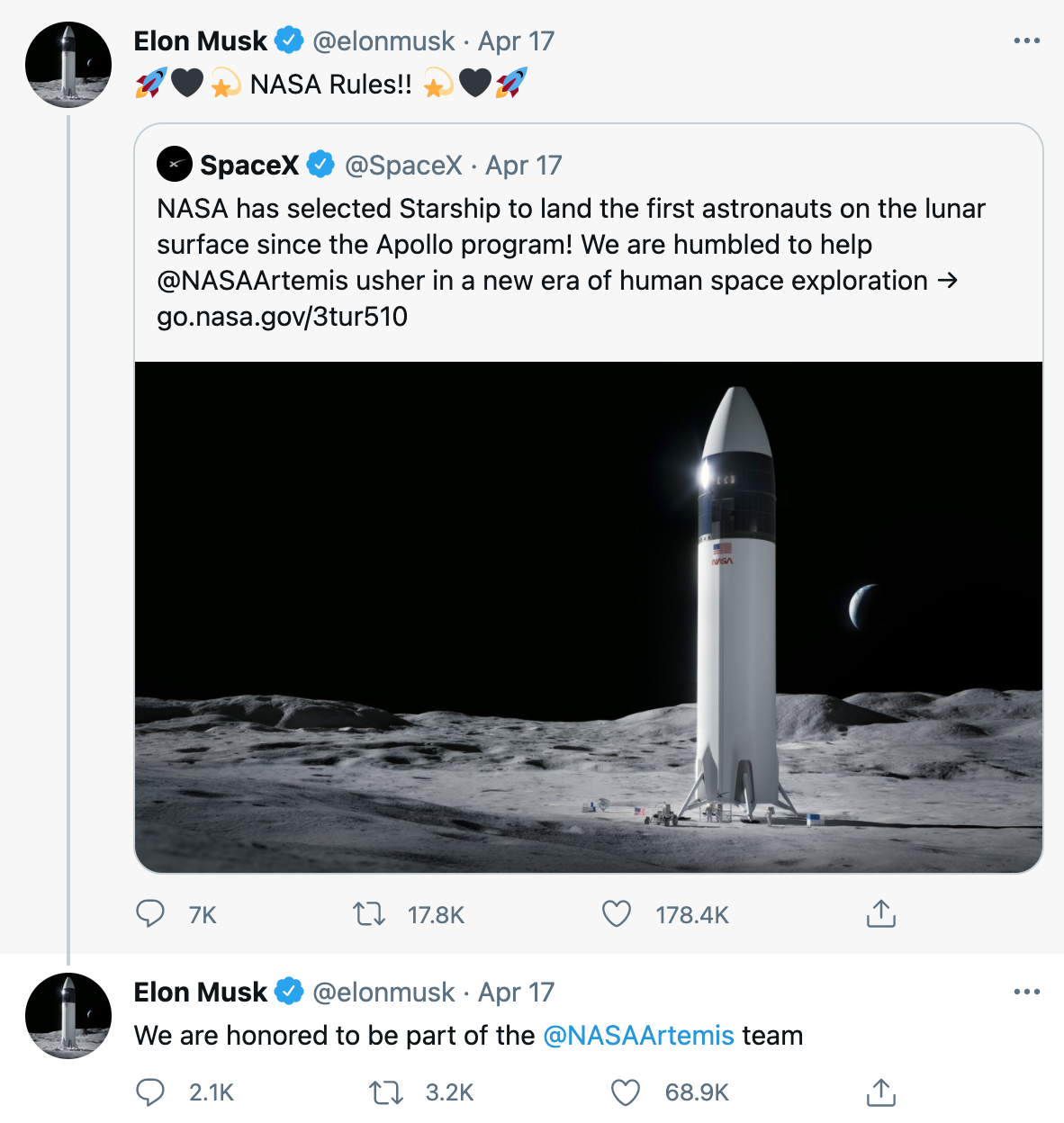已發表 :19/4/2021 上午9:05:34
點擊計數:2103
According to foreign media reports, yesterday (April 17 local time), NASA and SpaceX signed a $2.9 billion contract, which is the second phase of NASA's lunar lander development program. This lander will become the backbone of NASA's Artemis program, which aims to return humans to the moon, and SpaceX has submitted a bid for its Starship.
NASA shared its source selection statement after SpaceX won the bid to emphasize the rationale behind its decision. NASA's Human Exploration and Operations Mission Directorate (HEOMD) Deputy Administrator Kathryn Leuders evaluated the Human Landing System (HLS) award proposal. In the statement, she emphasized the reasons for the decision to advance the second phase of the contract with SpaceX, which requires the company to demonstrate the landing of manned and unmanned spacecraft on the lunar south pole.
It is reported that NASA evaluated the HLS Phase II proposal submitted by SpaceX, Blue Origin and Dynamics based on three criteria. HLS (full name Human Landing System) is NASA's official name for the lunar lander. These evaluations took into account the advantages of its design, price and management, and in the selection statement, the biggest inspiration is that SpaceX can obtain an "outstanding" rating for its management capabilities.In the previous evaluation of the first phase proposal, NASA considered this capability to be only an "acceptable" level. However, unexpectedly, in the selection statement approved by Leuders yesterday, SpaceX received the highest rating, which allowed the company to leap to the top of the food chain in one fell swoop.
It is reported that the main factors for NASA's rating improvement include: SpaceX's successful mission on the International Space Station (ISS), its decision to let NASA fully understand the development of Starship, and the choice to fund most of the cost of Starship development.
Specifically, SpaceX plans to "replicate and utilize management processes, toolsets, and software effectively used by other similar projects," which will enable NASA to accurately track the progress of HLS development. The agency's tracking development issues caused problems with its Space Launch System (SLS) project, and SpaceX used its operating culture to persuade NASA to upgrade its rating.
In addition, SpaceX also agreed to let NASA monitor the development of the entire Starship program. Although the Starship lunar lander will use the upper layer of this platform, certain design features such as aerodynamic surfaces, engines, solar panels and landing legs will differ between the two. Importantly, the lunar lander will use Starship’s first-level super-heavy booster and tanker spacecraft for refueling. According to Deputy Administrator Leuders, “SpaceX’s HLS efforts will inevitably follow the development of its commercial space flight capabilities. Intertwined", this has attracted NASA.
In last year's evaluation, two of these three factors (star funding and ISS mission experience) were favored by NASA. However, at that time, the agency also mentioned the delays in the development of the previous manned dragon spacecraft and the heavy Falcon rocket, which would increase the risk of the lunar project. Now, it seems that by providing NASA with a deeper understanding of the Starship program, SpaceX has won NASA's confidence in these risks.
The rapid pace of testing in Boca Chica, Texas, strengthened NASA’s confidence in the plan. SpaceX tested its first Starship prototype SN8 24 hours after submitting the final HLS proposal to NASA.
However, these benefits did not exist in the evaluation of Blue Origin and Dynetics. The former decided to cooperate with Lockheed Martin and Northrop Grumman to develop an integrated lander, which is favored by NASA. Despite this, it failed to meet NASA's requirements in terms of data sharing and intellectual property infringement, and it was also unfavorably evaluated. The commercialization plan of the latter was approved by NASA, but it was unable to arrange a time for risk mitigation, which is a source of concern for NASA.
In terms of technology evaluation, NASA has rated Blue Origin and SpaceX as "acceptable" and Dynetics has rated "marginal." The ratings of SpaceX and Blue Origin are still higher than previous evaluations, but surprisingly, Dynetics has dropped from "very good" to "acceptable."

In this regard, Elon Musk also tweeted that SpaceX is honored to be a member of the NASA Artemis team.